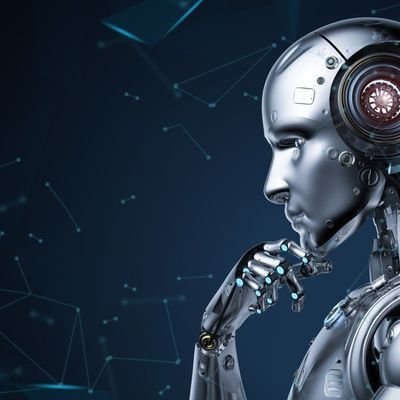
Environmental conservation has become a global priority as we face challenges such as climate change, deforestation, pollution, and the loss of biodiversity. While traditional methods of conservation have made significant strides, the scale and complexity of environmental issues require innovative approaches. Robotics is emerging as a powerful tool in the fight to protect our planet. From monitoring ecosystems to cleaning up pollution, robots are increasingly being deployed in various conservation efforts. This article explores the role of robotics in environmental conservation, highlighting the benefits, applications, challenges, and future potential of this technology.
The Role of Robotics in Environmental Conservation
Robots are machines capable of performing tasks autonomously or semi-autonomously, often in environments that are dangerous or difficult for humans to navigate. In the context of environmental conservation, robotics can be used to monitor ecosystems, restore damaged habitats, combat pollution, and protect endangered species. By leveraging advanced sensors, artificial intelligence, and machine learning, robots can collect and analyze data more efficiently and accurately than traditional methods, enabling more effective conservation strategies.
Benefits of Using Robotics in Conservation
Increased Precision and Efficiency
One of the primary advantages of using robots in environmental conservation is their ability to perform tasks with a high degree of precision and efficiency. For example, robots can be equipped with sensors that detect specific pollutants in the environment, allowing for targeted cleanup efforts. Similarly, robots can monitor wildlife populations with greater accuracy, providing conservationists with detailed data that can inform management decisions.
Access to Inaccessible Areas
Many of the world’s most fragile ecosystems are located in remote or difficult-to-access areas, such as deep oceans, dense forests, or polar regions. Robots can operate in these environments with ease, conducting surveys, collecting samples, and monitoring conditions without putting human lives at risk. This capability is particularly valuable in studying and protecting areas that are sensitive to human disturbance.
Continuous Monitoring
Robots can be deployed to monitor ecosystems continuously, providing real-time data on environmental conditions. This is especially important in detecting and responding to changes that could indicate environmental degradation or the presence of invasive species. Continuous monitoring allows conservationists to take timely action to prevent further damage and restore ecosystems.
Cost-Effective Solutions
While the initial investment in robotic technology can be high, the long-term benefits often outweigh the costs. Robots can perform tasks that would otherwise require significant human labor and resources, such as reforestation or pollution cleanup. Additionally, robots can operate in harsh or dangerous conditions, reducing the need for expensive safety measures.
Applications of Robotics in Environmental Conservation
Robots are being used in a variety of ways to support environmental conservation efforts. Here are some of the most notable applications:
1. Wildlife Monitoring and Protection
Robots are playing a crucial role in monitoring and protecting wildlife, particularly in areas where poaching or human encroachment threatens species. For example, drones equipped with cameras and sensors can be used to track the movements of endangered animals, such as elephants or rhinos, in real-time. These drones can also detect illegal activities, such as poaching or logging, and alert authorities, allowing for a rapid response.
Underwater robots, known as autonomous underwater vehicles (AUVs), are used to monitor marine life, including tracking the movements of fish, whales, and other marine species. These robots can collect data on animal behavior, population dynamics, and habitat use, providing valuable insights for conservation planning.
2. Reforestation and Habitat Restoration
Reforestation is a critical component of efforts to combat climate change and restore degraded ecosystems. Robots are being developed to plant trees and restore habitats on a large scale. For example, some robots are designed to autonomously plant tree seeds in areas that have been deforested, ensuring that the seeds are placed at optimal depths and locations for growth. These robots can work much faster than human labor, enabling the reforestation of large areas in a short amount of time.
In addition to planting trees, robots can be used to remove invasive species and restore native vegetation in degraded habitats. By targeting specific areas for restoration, robots can help to improve the health and resilience of ecosystems.
3. Pollution Detection and Cleanup
Pollution is one of the most significant threats to the environment, affecting air, water, and soil quality. Robots are being deployed to detect and clean up pollution in various environments. For example, underwater robots are used to monitor water quality and detect pollutants in rivers, lakes, and oceans. These robots can identify sources of pollution, such as oil spills or chemical discharges, and provide data that can be used to guide cleanup efforts.
In addition to detection, robots can be used to clean up pollution directly. For instance, robots equipped with filters or suction devices can remove microplastics from water bodies or clean up oil spills. These robots can operate in hazardous conditions, reducing the risk to human workers and increasing the efficiency of cleanup operations.
4. Climate Change Research
Robotics is also playing a vital role in climate change research by providing scientists with the tools they need to study and understand the effects of climate change on ecosystems. For example, robots can be used to monitor glaciers and ice sheets in polar regions, collecting data on melting rates and ice dynamics. This information is crucial for predicting future sea-level rise and its potential impacts on coastal communities.
Additionally, robots can be deployed in remote sensing applications, such as monitoring carbon dioxide levels in forests or tracking changes in vegetation cover. These robots can provide high-resolution data that can be used to model and predict the impacts of climate change on different ecosystems.
5. Coral Reef Protection
Coral reefs are among the most biodiverse ecosystems on the planet, but they are also highly vulnerable to climate change, pollution, and overfishing. Robots are being used to protect and restore coral reefs in several ways. For example, underwater robots can monitor the health of coral reefs, detecting signs of stress or disease. This allows conservationists to take early action to protect the reefs.
In some cases, robots are being used to actively restore coral reefs by transplanting healthy coral fragments onto damaged reefs. These robots can operate with precision, ensuring that the coral fragments are placed in the best possible locations for growth. This approach has the potential to accelerate the recovery of degraded reefs and enhance their resilience to future threats.
Challenges of Using Robotics in Environmental Conservation
While robotics offers significant potential for environmental conservation, there are several challenges that need to be addressed:
High Initial Costs
The development and deployment of robotic technology can be expensive, particularly for large-scale projects. While the long-term benefits of using robots in conservation may outweigh the costs, securing the necessary funding for initial investments can be challenging, especially for non-profit organizations and governments in developing countries.
Technical Limitations
Robots, particularly those used in environmental conservation, often operate in challenging environments, such as deep oceans, dense forests, or extreme weather conditions. These environments can pose technical challenges, such as limited battery life, communication difficulties, or mechanical failures. Developing robots that can withstand these conditions and perform reliably over extended periods is an ongoing challenge.
Ethical Considerations
The use of robotics in environmental conservation raises several ethical questions. For example, there are concerns about the potential impact of robots on wildlife, particularly if they are used extensively in sensitive ecosystems. Ensuring that robots do not disrupt or harm the very environments they are designed to protect is essential. Additionally, there are questions about the potential displacement of human labor in conservation work, particularly in communities that rely on such work for their livelihoods.
Data Management and Privacy
Robots used in environmental conservation generate vast amounts of data, which must be stored, analyzed, and managed effectively. Ensuring that this data is used responsibly and that privacy concerns are addressed, particularly when monitoring activities involve human populations, is crucial.
The Future of Robotics in Environmental Conservation
The future of robotics in environmental conservation is promising, with several emerging trends and technologies likely to shape the field in the coming years:
Integration with Artificial Intelligence (AI)
The integration of robotics with artificial intelligence (AI) is expected to enhance the capabilities of robots used in environmental conservation. AI can enable robots to analyze data in real-time, make decisions autonomously, and adapt to changing conditions. For example, AI-powered drones could identify and track endangered species more accurately or detect and respond to pollution events faster. This integration will make robots even more effective tools for conservation efforts.
Development of Swarm Robotics
Swarm robotics, where multiple robots work together to achieve a common goal, is an emerging field with significant potential for environmental conservation. For example, a swarm of drones could be used to plant trees in a reforestation project, with each drone working independently but coordinating with others to cover a large area efficiently. Swarm robotics could also be used in tasks such as monitoring large ecosystems or cleaning up extensive pollution events.
Advancements in Autonomous Vehicles
Autonomous vehicles, including drones and underwater robots, are expected to become more sophisticated and capable of performing complex tasks with minimal human intervention. These advancements will allow robots to operate in even more challenging environments, such as deep-sea ecosystems or remote wilderness areas, expanding the possibilities for their use in conservation.
Increased Collaboration Between Sectors
The future of robotics in environmental conservation will likely involve increased collaboration between various sectors, including academia, industry, government, and non-profit organizations. By working together, these sectors can pool resources, share knowledge, and develop innovative solutions to the challenges facing our planet. Public-private partnerships, in particular, may play a key role in advancing the development and deployment of robotics in conservation efforts.
Focus on Sustainable Development
As the use of robotics in environmental conservation grows, there will be a greater emphasis on ensuring that these technologies are developed and deployed in a sustainable manner. This includes minimizing the environmental impact of robot production, reducing energy consumption, and ensuring that robots do not contribute to pollution or resource depletion. The principles of sustainable development will need to be integrated into the design and use of robotics to ensure that they contribute to long-term environmental goals.
Conclusion
Robotics is poised to become a transformative force in environmental conservation. The ability of robots to perform precise, efficient, and continuous monitoring and intervention in challenging environments makes them invaluable tools for protecting and restoring ecosystems. From monitoring wildlife and planting trees to cleaning up pollution and researching the impacts of climate change, robots are expanding the possibilities for what conservationists can achieve.
However, the successful integration of robotics into conservation efforts requires careful consideration of the challenges and ethical implications associated with their use. High initial costs, technical limitations, ethical concerns, and the management of vast amounts of data are all hurdles that must be overcome. As the technology continues to advance, addressing these challenges will be critical to realizing the full potential of robotics in conservation.
Looking ahead, the future of robotics in environmental conservation is likely to be shaped by several key trends, including the integration of AI, the development of swarm robotics, advancements in autonomous vehicles, and increased collaboration across sectors. These developments will enhance the capabilities of robots, enabling them to take on even more complex and impactful roles in conservation efforts.
Moreover, as the global community continues to prioritize sustainability, the deployment of robotics in conservation will need to be aligned with sustainable development goals. This means not only using robots to protect and restore the environment but also ensuring that the production, operation, and disposal of these technologies do not contribute to environmental degradation.
In conclusion, while robotics is still an emerging field in environmental conservation, its potential is vast. By harnessing the power of robots, we can address some of the most pressing environmental challenges of our time, protecting biodiversity, combating climate change, and ensuring a healthier planet for future generations. As we continue to innovate and refine these technologies, robotics will undoubtedly play an increasingly important role in the global effort to conserve our natural world.
ALSO READ: Ethical Data Science | Privacy and Security Concerns









